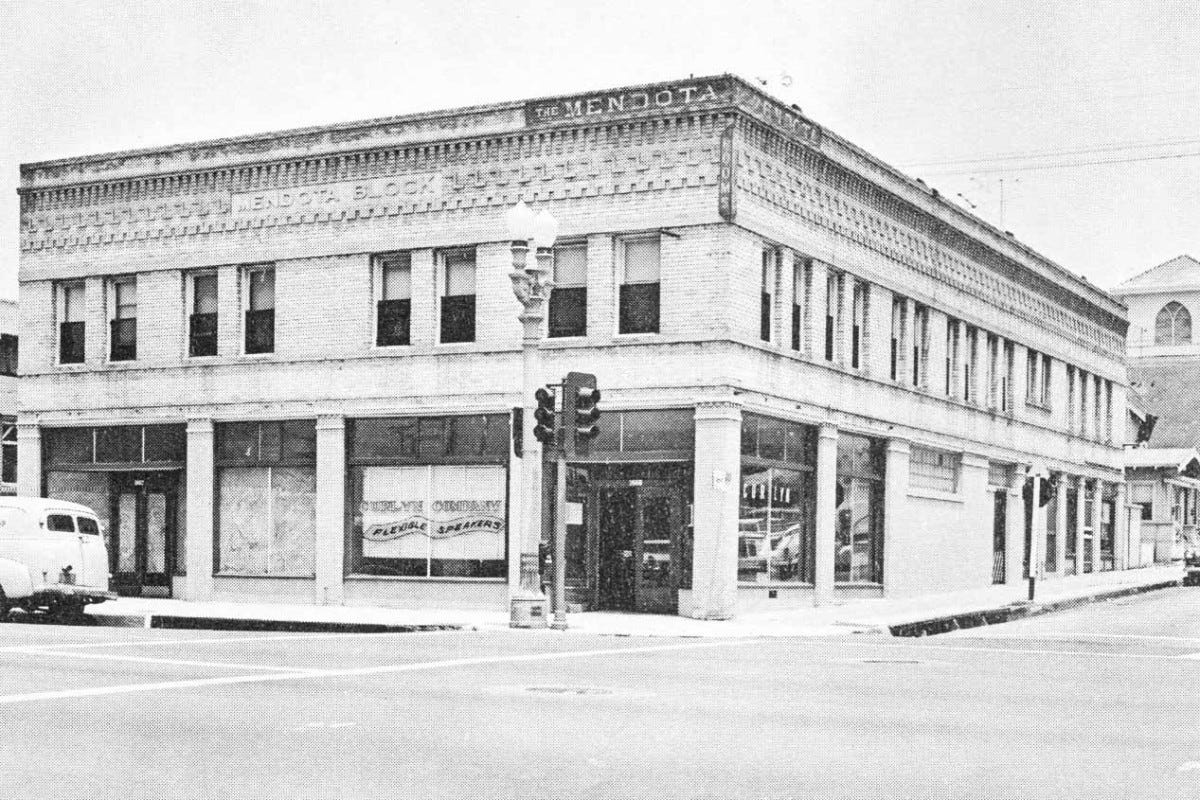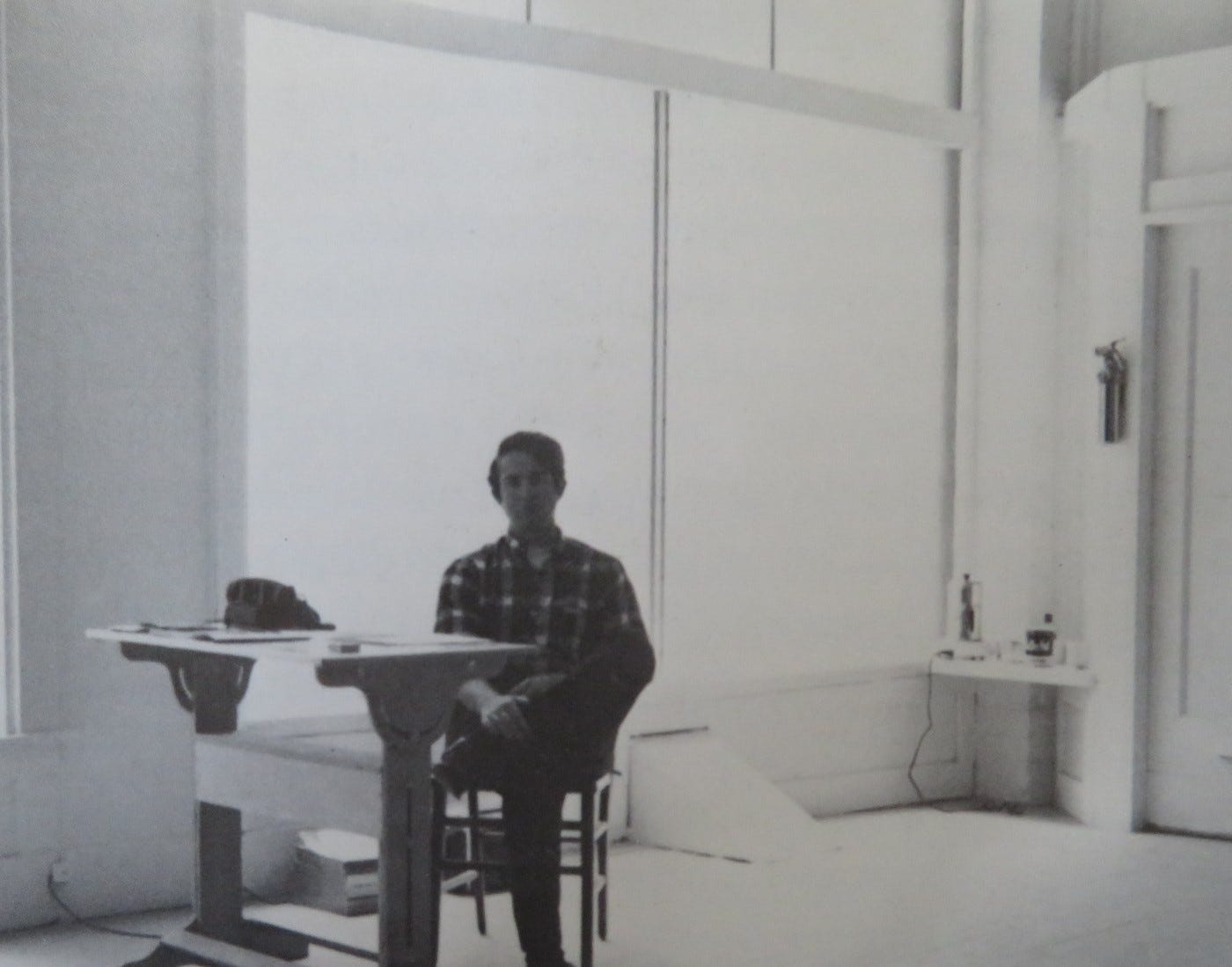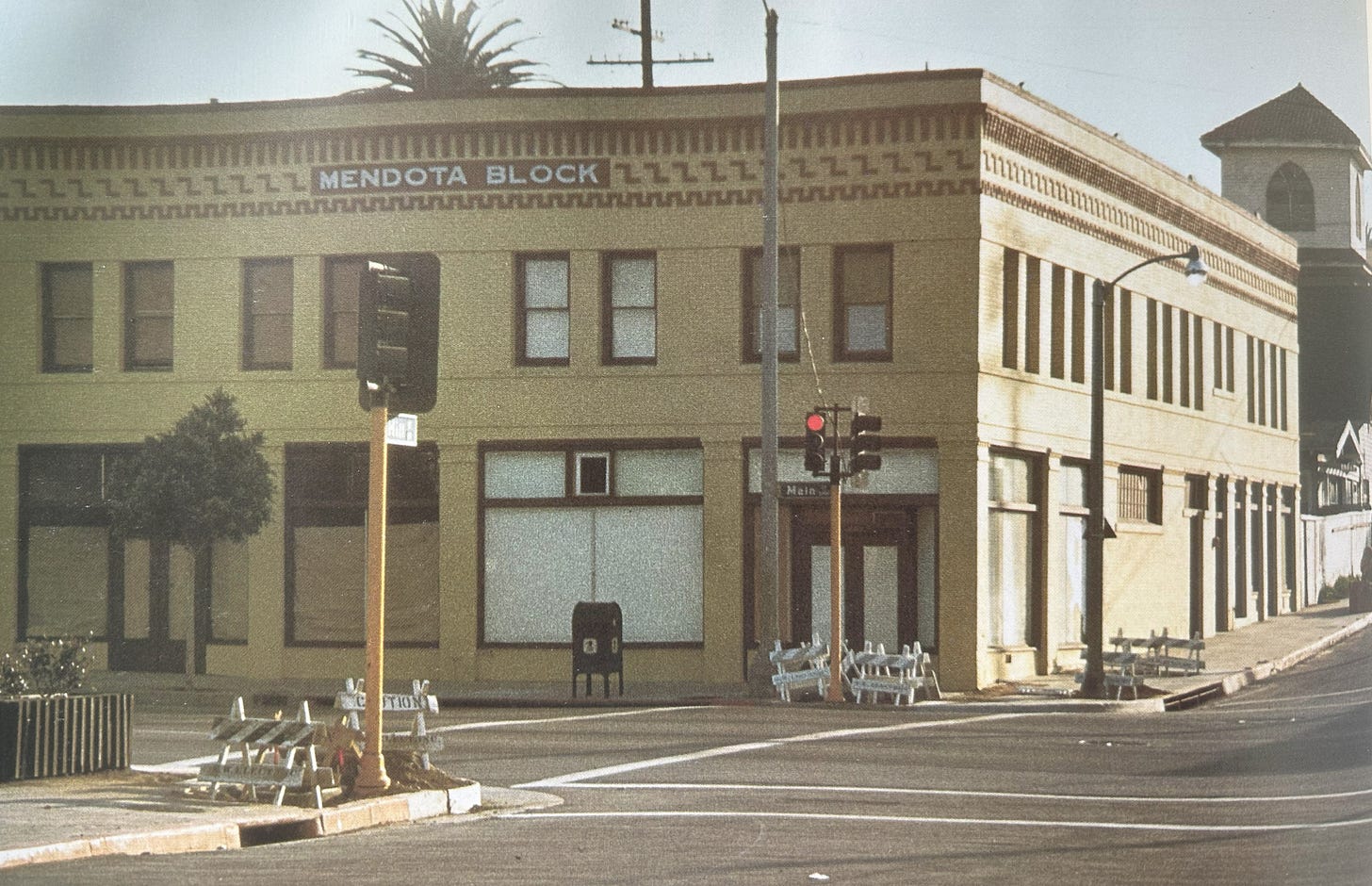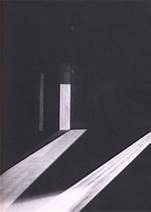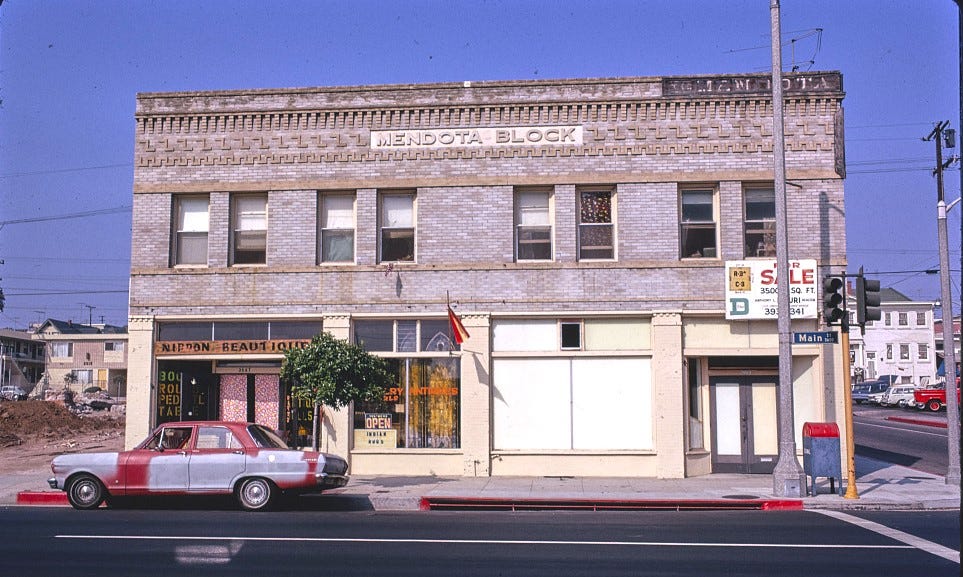From 1969 to 1974, James Turrell creates a pivotal light art piece, the “Mendota Stoppages,” in the Mendota Block building at Main and Hill.
In 1967, 24-year-old, light artist1 James Turrell2 leases3 the entire Mendota Block in run-down Ocean Park.4 Turrell lives in the back part of the second floor, using the front of the upper floor and the ground floor as his studio and exhibit space.5 A pivotal environmental art piece, the “Mendota Stoppages,” utilizes several rooms in the Mendota Block building.
From 1966 through 1968 Turrell seals, plasters, and smooths every interior surface. He paints the ceiling, walls, and floors white. Then makes openings (light apertures) in the pristine walls, letting exterior light from natural sunlight, and from traffic lights, street lights, car lights, etc.
From 1969 to 1974 he creates his early pieces of visual art. In 1967, Turrell exhibits several works at the Pasadena Art Museum. He becomes known in the Los Angeles art circles as a slightly mysterious character who occasionally invites people to the Mendota6 to see his work, but isn’t interested in selling it.
Terrell keeps transforming the interior of the Mendota. He makes dreamlike spaces divided by walls of colored light that look solid - till you came close to them. He cut his first sky space in the roof of the Mendota. Turrell lives at the Mendota until 19747 when he moves his residence and studio to Arizona.8
Turrell is interested in light as a material and a concern with issues of how we perceive. Except for models, drawings, and prints that relate to his larger works, most of Turrell's oeuvre is not an object of any kind - instead, it is the experience of light. Turrell's work contains no image other than its own light - in pure fields of luminous color. Most of Turrell's light work is based on the principles of a Ganzfeld - a field of light so indistinct that it has no perceivable foreground or background, and no point of focus. Ganzfeld – like stepping into paint.
Turrell is born in Los Angeles in 1943. Turrell, who has a Quaker background and who learns to fly when he is sixteen, does conscientious objector service flying Buddhist monks out of Tibet. In 1961, Turrell enters Pomona College and majors in mathematics and perceptual psychology. And takes a lot of art classes. He attends graduate school at UCI. His eureka moment comes when he notices that projected slide show images of art have a luminosity that is missing in the original.
In 1966, in a sting operation by the FBI, Turrell is arrested and jailed for counseling potential Vietnam War draftees. Turrell, owns a Helio Courier airplane and supports himself by flying airplanes.
Turrell does not own - but leases the entire building - which he calls the “Mendota Hotel.”
In the same time period, Francis and Diebenkorn are one block south on Main St from Turrell. Although friendly and undoubtedly acutely aware of each other’s work, Diebenkorn, Francis, and Turrell are never close. Each resists classification. Diebenkorn and Francis are painters and a generation older than Turrell. Turrell met Francis in 1962 and develops a friendship based on a bond over airplanes and light.
At the Mendota, Turrell has three formal exhibitions which are reviewed in national publications.
1968 Light Projections (Xenon Source), The Main and Hill Studio, Mendota Hotel
1969 Light Space (Existing outside light), The Main and Hill Studio, Mendota Hotel
1970 Jim Turrell (Existing outside light), The Main and Hill Studio, Mendota Hotel
Turrell’s Mendota Stoppages series (1969 - 1974) makes use of available exterior light sources. Between 1969 and 1970, he holds performances in the evenings - conducted in nine stages and by the end, viewers’ eyes grow weary in the low light conditions. Near the end of one performance, Turrell shuts all the light apertures and reduced the room to black. However, many audience members continue to see light. They believe that the lighting has remained at this low level, but they are experiencing retinal after-effects that are internally produced.
In the 1970s, Al Ehringer, Bob Scura, and John P. Wilson are buying up dilapidated buildings along Main Street, fixing them up and luring restaurants and shops to fill the space
A Guggenheim fellowship,and grants from the NEA and DIA Art Foundation enable Turrell to, buy a volcanic crater (Roden Crater) in northern Arizona, in which he is building an environmental art piece. An enormous earthwork intended to make an overwhelming area of the sky appear to be utterly tangible.




